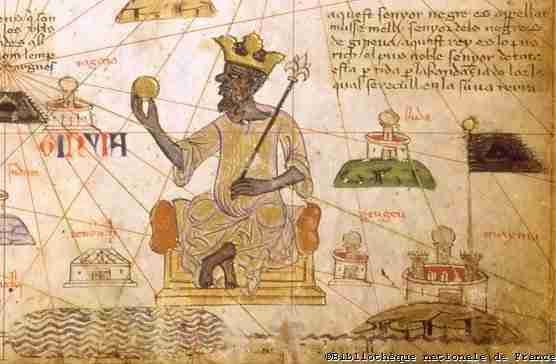With the earliest evidence of currency in pre-colonial West Africa taking the form of gold coins dating back to the ninth to tenth centuries AD, a method for purifying gold was essential. The ancient settlement of Tadmekka, located on the southwestern border of the Sahara Desert, is now known as Essouk. It was one of the most critical market towns on the trans-Saharan camel-caravan routes in the early Islamic period, supplying West African gold, slaves, and ivory to the Mediterranean world.
In 1068 AD, three centuries before Timbuktu became known as an African ‘Eldorado,’ a fabled city constructed of gold, the Arab Andalusian historian and geographer al-Bakrī, described Tadmekka as “a large town… with a richly attired king and pure gold coinage.” He said Tadmekka was, “of all the towns in the world the one that resembles Mecca the most.”
In 2005 a British Museum archaeologist Sam Nixon revealed that the unstamped “bald” gold coinage of Tadmekka recorded by al-Bakri was related to trans-Saharan gold export.
In archeological explorations of Tadmekka, Nixon found droplets of highly refined gold (98%) left in molds from its metal workshops, triggering an extensive investigation into how medieval Africans purified the gold they were using for their currency.
Among the approximately 70 crucible specimens excavated, copper and iron slags, crucible shards for steel manufacturing, unusual glass fragments, coin molds containing gold prills, and two crucibles for processing raw gold extract were found.
A Unique Process for Purifying Gold
Success
You are now signed up for our newsletter
Success
Check your email to complete sign up
The sub-Saharan economies mostly used an assortment of glass beads as money, while North African Islamic economies imported gold coins from the south.
According to writers, although the coins had tremendous commercial value, they were not meant to make political statements. The unmarked coins were used as a trading mechanism, attracting the early Islamic caravan trade to locations in the north, south, and east. At the Mediterranean coastline, local authorities would melt them down or inscribe them with a stamp.
The metallurgical remains from Tadmekka offer not only historical records, but also aided in understanding of the site’s complex mining process, which produced high-quality gold. This process added powdered glass beads to an agglomeration containing gold flakes and nuggets, which, upon smelting, led to the separation of the precious metal from lighter minerals.

Marc Walton, co-director of the Center for Scientific Studies in the Arts, in collaboration between Northwestern University and the Art Institute of Chicago, said, “This is the first time in the archaeological record that we saw glass being used to be able to refine gold. The glass appeared to be material that was [actually] recycled glass materials … so it really shows the industriousness and creativity of the craftsmen, who understood the properties of gold and glass enough to [use them for] this process of refining gold.”
The glass used primarily came from a location in Thailand, where it was discovered between the 4th and 3rd centuries BC. It is quite improbable that this specific type of glass was accessible in western Africa around the late first century AD.
Walton remarked, “In the case of medieval West Africans, “They were taking the ore and other raw materials from the river and mixing it with glass. Since gold is inert, it doesn’t fully dissolve into the melted glass, while impurities and other materials do, making this “a really novel way of using recycled glass material.”
Replicating ancient technologies
Walton’s team at the Center for Scientific Studies (CSSA) recreated several ancient technologies. To understand how medieval Africans refined gold so well, they used what they had available.
“We bought gold dust from a chemical supply company and then we mixed it with local Lake Michigan sand and then we made our own synthetic glass,” says Walton. “We heated it up, were able to dissolve the minerals in the sand, and were left behind with gold,” he said. Walton and his colleagues brought this small-scale, customized gold purification method into the contemporary era, and they tailored it to their surroundings in Illinois. Their findings demonstrate that the medieval Malian approach was both sophisticated and ingenious.
The emergence of multi-purpose high-temperature workshops in cities is neither new nor surprising. Documenting the details of such workshops, however, offers unique insights into the social and technical structure of these communities, as well as the skill levels of their inhabitants.















